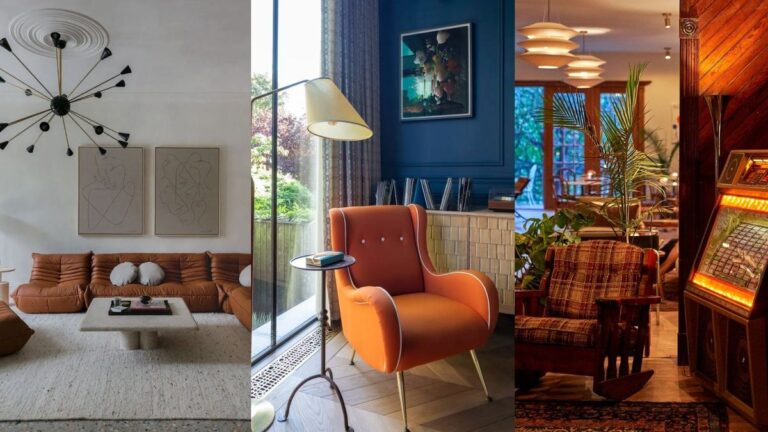Retro home decor is characterised by vibrant colours and patterns, 60s and 70s furniture and a whole lot of fun and nostalgia. Decorating with vintage and retro elements means looking back to the past for interior design inspiration and handpicking practical items that you truly love.
Keep the vibe sophisticated by choosing high-quality fabrics and furniture with a luxurious feel, and scouting antique shops and flea markets for unique finds. Retro is one of the most playful and fun interior design styles, and it always makes a statement even when used sparingly.
Incorporating elements with a retro vibe, like 1960s lamps or a patterned rug inspired by David Hicks, will give the space more depth and interest, and will definitely create a sense of home and living that feels well lived and well travelled.
8 Retro Homes Showcasing This Trend
The secret to achieving timeless retro decor is to mix and match and keep it transitional. You might have a modern sofa, a second-hand coffee table or a midcentury sideboard with hanging neon lights. Incorporating the colors, patterns and shapes commonly found in retro design styles will create just the right amount of eclectic space. Here's how to bring a retro feel into your home.
1. Look for midcentury furniture
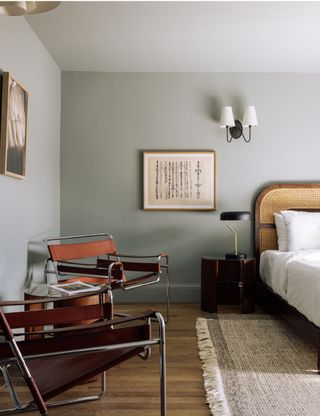
(Image courtesy of Catskill Image for Field Theory)
The easiest way to tap into retro style is to incorporate midcentury modern furniture into your space. “Add a retro vibe to your home with timeless midcentury pieces, like armchairs and sideboards,” suggests interior designer Sophie Clemson.
Mixing design styles is encouraged. For example, placing a midcentury sideboard opposite a contemporary sectional sofa creates visual friction and gives the impression of a carefully curated home. Similarly, a midcentury modern-inspired tapered-leg sofa (by Burrow) and a '60s wooden TV stand will inject a subtle retro vibe into your living room.

Sophie Clemson is the co-founder of The Living House, an affordable online interior design company that helps busy families easily revamp their homes online and on a budget.
2. Choose retro decor you really love
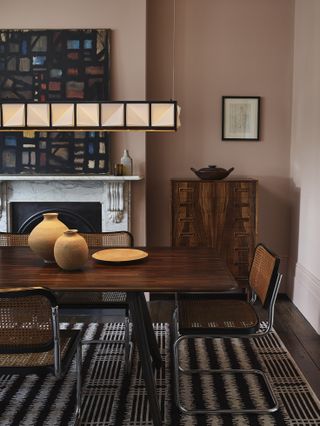
(Image courtesy of Davey Lighting)
Look for retro home decor pieces you absolutely love, with a few unique retro pieces to accentuate an interesting interior design scheme. “I recommend investing in a few memorable vintage pieces that you love in each space,” says interior designer Leah Harmatz.
Inspired by the space exploration of the time, 1960s fibreglass lamps would look great in a child's room, while the Eames Lounger, Sputnik Chair and orange moulded plastic Nesso table lamp add forward-thinking design to any living space or home office.
Leah Harmatz recommends collecting furniture and art from different eras to avoid looking monotonous or “trendy.” “The juxtaposition of vintage and modern creates a timeless feel. Try to look for original pieces rather than mass-produced copies or reproductions so that your space never becomes too trendy,” she says.
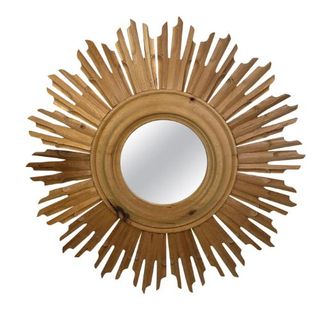
Stunning large German made Starburst Sunburst wooden mirror, circa 1960's
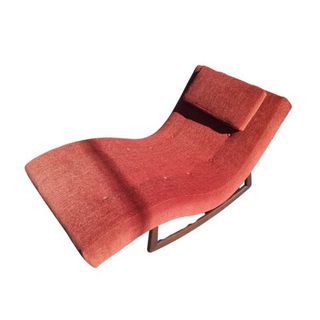
Midcentury sculptural Wave chaise rocking chair by Adrian Pearsall, circa 1960s
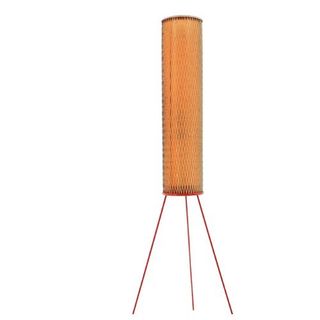
Space Age Floor Rocket Lamp by Josef Furka, Napaco, 1960s

Driven by the belief that beautiful, functional design has a direct impact on our daily lives, Leah Harmatz founded Field Theory in 2015. The design firm aims to add character and warmth to residential and commercial spaces with eclectic, layered designs and an eye for engaging all the senses.
3. Choose a low seat
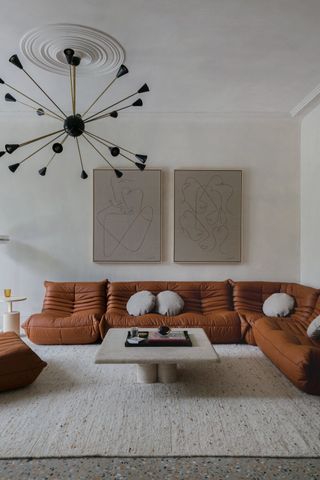
(Images courtesy of Studio Duggan/Mariell Lindhasen)
Look for low-to-the-ground furniture that exudes a casual, free-spirited aesthetic and a retro vibe that never goes out of style. There's something about low sofas and armchairs that always look effortlessly chic. Sofas like Ligne Roset's Togo (pictured above) and beanbag loungers from Wayfair evoke the sunken living rooms and “conversation pits” that were popular in the '70s.
You can choose a low-profile sectional sofa, available from Floyd, or if you prefer something a little more daring, you can opt for a hanging pod chair or daybed.
4. Choose a retro color palette
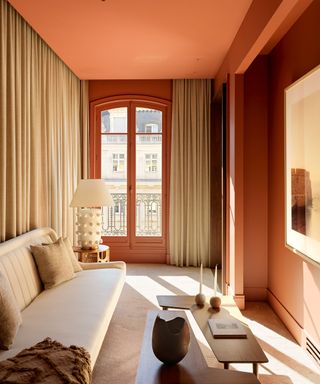
(Image courtesy of Damien Langlois-Meurinne Studio)
Retro color trends are making a comeback right now, so repainting your home in a retro-inspired color scheme (think red, orange, blue, pink, or purple) is a great way to incorporate nostalgic decor in a more transitional way. No one wants to repaint every two or three years, so follow interior designer Nina Lichtenstein's advice and choose muted retro colors like avocado green and mustard yellow for your walls and cushions for a subtle nod to the past. Dusk blue and pistachio are also reminiscent of the '50s.
For a cohesive design, use the same colour palette in different patterns – for example, you could have a mustard floral wallpaper and a simple mustard striped rug.

Nina Lichtenstein is the founder and principal residential designer of her eponymous design studio based in Westchester, New York. Nina believes residential design should capture the unique spirit of a family by nourishing their soul while addressing their daily needs. She is highly regarded for designing, renovating and building elegant living spaces.
5. Buy furniture that will last
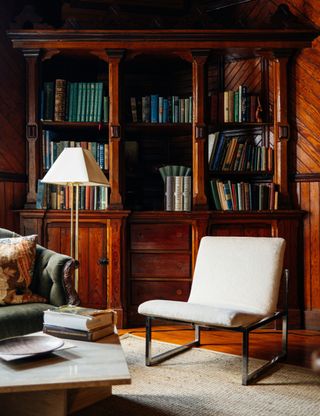
(Image courtesy of Catskill Image for Field Theory)
Research the craftsmanship and quality of an item before you buy, and buy pieces from different eras for a greater sense of authenticity. “We tend to see images of dream homes from the past, with the latest designer items and bright colors, but in reality, most people's homes were not like that,” says Rachel Toy, an expert on vintage homes and collectibles. “Those homes tended to contain less throwaway material and items that were made to last.”
“For example, in a 1960s home, it was not uncommon to find vintage furniture, décor and kitchenware from the 1940s. In a student apartment in the 1990s, the furniture would likely have been second-hand from the 1960s or 1970s. So, to bring that style into your home, you need to mix and match pieces from different eras and choose ones that fit your personal sense of style.”
6. Use geometric patterns
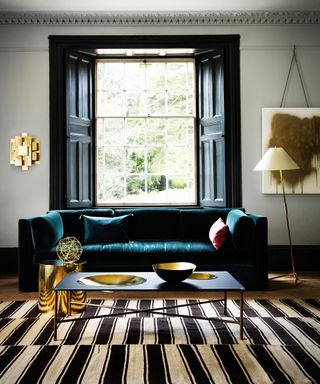
(Image courtesy of Future / Damian Russell)
Decorating with pattern and texture is key in any living space. Chrome armchair legs on a thick, fluffy carpet or checked cushions on a distressed leather armchair create a beautiful contrast. Nina Lichtenstein says the best way to achieve this is to pair a geometric rug with a calm, monochromatic sofa, as pictured above. “This will create a balanced mix of retro flair and contemporary sophistication in your lounge area,” says Nina.
7. Use negative space
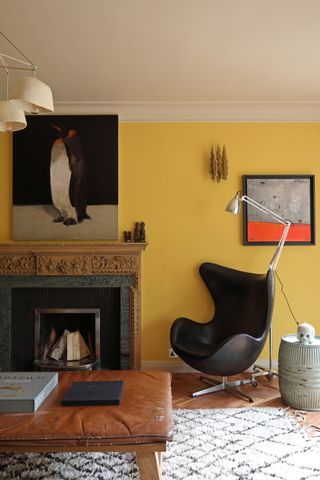
(Images courtesy of Francesca's Paints and Peter's Ochre)
Retro is fun and impactful, but less is generally more and works best when combined with more contemporary elements. To make your retro home décor stand out, think about negative space in your interior design.
The idea is to give your decor and furniture room to breathe so you can really enjoy them. Keeping things tidy and clutter-free will keep it from looking like an antiques shop. Think about the natural passageways of your space and incorporate neutral colours if you're worried about the retro style being too strong.
8. Use rich wood tones
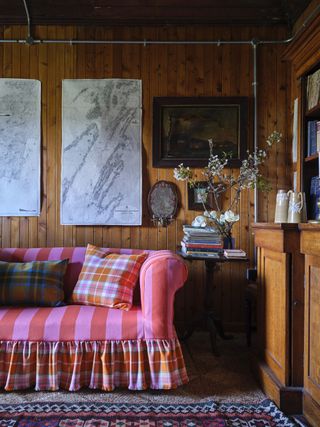
(Images courtesy of Johnstons of Elgin & Ben Pentreath)
Incorporating natural wood tones into your space, whether it's wall paneling, flooring, or furniture, can help give the space a retro, relaxed feel. Don't be afraid to combine dark wood with lighter or warmer woods, as they can act as a buffer. For example, if you have a wooden floor and a wooden coffee table, put a rug on the floor to break them up.
The rich wood tone pairs well with other natural materials such as wicker, rattan, chrome, marble and clear acrylic.
FAQ
What is the difference between retro and vintage design?
“Retro tends to refer to something relatively recent, from the last 20 years or so. In 2024, that would be items from the early to mid-2000s, but the lines can get blurry and vintage can sometimes be called retro, so retro and vintage are sometimes confused!” says vintage collectibles expert Rachel Toy. “Vintage is technically a term that refers to items from the last 80 years, from the 1930s to the 1980s. Antique means items that are over 100 years old.”
Enjoy funky 70s glass pendants, optical, psychedelic artwork, and retro accessories that will make you nostalgic. Interior designer Leah Harmatz has one final tip for maintaining a timeless yet transitional feel: respect the context of the building. “I look at the architecture of the home and reference the era it was built in, which helps create a cohesive and timeless interior,” says Leah.


